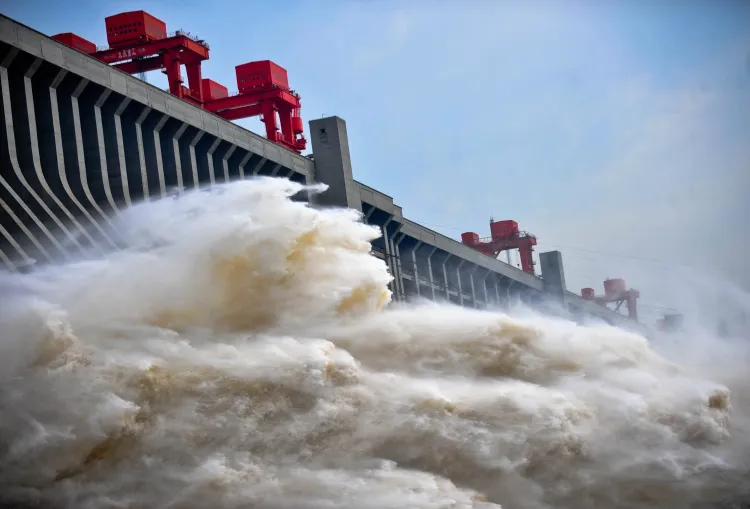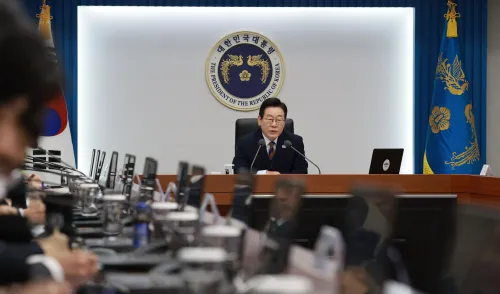Is China’s Yarlung Zangbo Dam Project a Geopolitical Game Changer?

Synopsis
Key Takeaways
- Significant shift in South Asian water diplomacy.
- Potentially displaces over 1.2 million Tibetan residents.
- Geostrategic significance near contested borders.
- China's hydro-hegemonic model may lead to future conflicts.
- International norms on resource sharing are at risk.
Beijing, Aug 7 (NationPress) China’s initiative to advance the Yarlung Zangbo dam project in Tibet amidst rising concerns marks a pivotal shift in South Asian water diplomacy, characterized by an increase in aggressive strategies, according to a report released on Thursday.
This development followed India's suspension of the Indus Water Treaty with Pakistan after the terrorist attack in Jammu and Kashmir by the Pakistan-based militant group 'The Resistance Front' (TRF) on April 22. This suggests that Beijing perceives water resources as a burgeoning instrument of geopolitical power, as highlighted in the 'Geopolitical Monitor' report.
The Yarlung Zangbo dam project signifies a critical juncture in China’s rise as a hydro-hegemon capable of controlling water flows across various international borders to serve its strategic interests. While Beijing presents the project as part of its renewable energy transition and development plans for Tibet, its location, scale, and timing indicate troubling and calculated geopolitical motives that go far beyond mere energy security.
The report points out that China's construction initiatives in Tibet illustrate a systematic strategy aimed at resource exploitation and territorial consolidation, with the Yarlung Zangbo project as the latest example. Since the year 2000, Beijing has constructed or approved over 193 hydroelectric projects in Tibet, with approximately 80% categorized as major or massive. Over 60% of these projects are either in planning or early stages; however, their completion could displace more than 1.2 million people and destroy numerous sacred sites.
These development initiatives have significant repercussions for Tibetan communities, as thousands are forcibly relocated to facilitate infrastructure and mining projects. Moreover, traditional grazing lands have been submerged or adversely affected, leading to widespread devastation of livelihoods.
The dam's location underscores its geostrategic importance. Positioned just 30 kilometers from China's disputed border with India within the world’s deepest canyon system, the facility is located at the intersection of various geopolitical fault lines. The Yarlung Zangbo curves around the Namcha Barwa mountain, where it dramatically drops in altitude over 50 kilometers. This natural feature not only optimizes conditions for hydropower generation but also grants China an unparalleled dominance over water flows to downstream nations.
The Yarlung Zangbo dam, therefore, transcends being merely a development project or a source of diplomatic tension between China and India; it represents a significant challenge to the international order governing shared natural resources.
China's determination to proceed with the project despite global objections illustrates its disregard for international laws and agreements. As global water scarcity intensifies, China's hydro-hegemonic model appears to be setting the stage for future conflicts over this vital resource, as noted by the Toronto-based Geopolitical Monitor.









